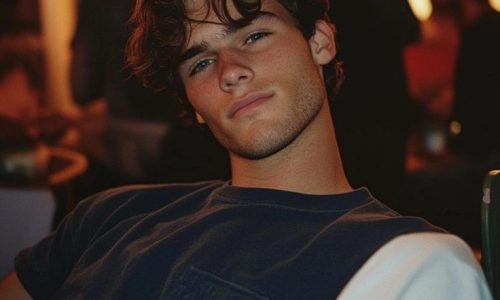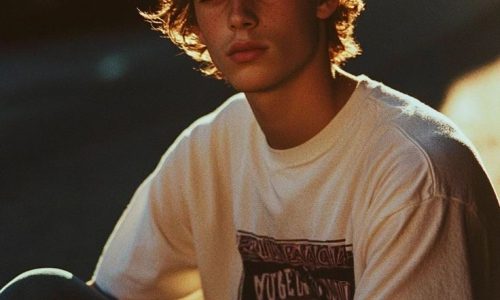
Youth Fashion 2025: Bold Statements and New Norms
Introduction to the Youth Fashion Revolution of 2025
In 2025, the youth fashion scene is no longer confined to traditional norms or mainstream expectations. Instead, it has become a dynamic landscape where creativity, identity, and innovation merge to form a progressive style language. Today’s younger generation, including Gen Z and emerging Gen Alpha voices, are not just consumers but key drivers of what is trending. Their fashion choices reflect not only aesthetic preferences but also cultural commentary, digital integration, and deep personal expression. As the world rapidly evolves, so too does the sartorial spirit of youth, breaking old rules and setting fresh standards.
The Influence of Cultural Shifts on Youth Style Trends
Cultural movements have profoundly shaped the evolution of fashion for young people in 2025. The rise of global activism, online communities, and awareness around social justice has spurred a fashion identity that embraces difference. Clothes have become powerful tools for protest, pride, and proclamation. From eco-conscious apparel that champions sustainability to slogan-heavy pieces inspired by civil rights, young people are wearing their beliefs on their sleeves—literally. Traditional fashion rules are being rewritten as inclusive design, anti-racist statements, gender-fluid fits, and body-positive silhouettes become the new norms of style expression.
Technology and the Digital World Reshaping Youth Fashion
Digital platforms have emerged as essential catalysts in shaping youth fashion today. Social media apps like TikTok and Instagram have evolved from mere sharing spaces into powerful trend incubators. Influencers, micro-creators, and even AI-generated personas are dictating the must-haves of the season. Moreover, virtual try-ons, AR filters, and digital-only fashion collections are redefining how young consumers shop and engage with brands. Virtual identities are now just as curated and styled as real-world appearances, blending fashion with technology in unprecedented ways. The digital realm offers limitless aesthetic experimentation for a generation unafraid to express multiple identities.
Gender Fluidity and the Rise of Androgynous Youthwear
One of the most significant style shifts in 2025 is the normalization of gender-fluid fashion. The binary has been broken, and young people are embracing silhouettes, colors, and cuts that defy outdated gender norms. Clothing is now seen more as a form of personal narrative rather than a gender signifier. This change has led to a surge in unisex fashion labels and collections designed for all body types. Skirts on boys, oversized tailoring for girls, and a revival of historically androgynous designs reflect this radical inclusivity. Major fashion houses and emerging designers alike are realigning their design philosophies to resonate with this transformative mindset.
Eco-Conscious Youth Fashion and the Demand for Sustainability
Sustainability has gone from being a niche concern to a fashion imperative among young consumers. In 2025, fast fashion is increasingly viewed as outdated and irresponsible. Eco-aware youth are driving demand for circular fashion, upcycled garments, and biodegradable fabrics. Brands that cannot account for their environmental footprint are losing relevance, while ethical startups and transparent fashion companies are rising. Thrifting, swapping, and renting clothes have become not only cost-effective but also culturally stylish. Environmental advocacy is now embedded into everyday fashion choices, as young people seek to reduce waste and champion mindful consumption.
Rise of DIY and Customization Culture in Youth Fashion
Personalization reigns supreme in the fashion ethos of 2025. Today’s youth seek individuality in a mass-market world, and they are turning to DIY techniques and customization to make statements. From hand-painted jackets to personalized embroidery and patchwork jeans, self-styled looks are the ultimate fashion flex. The resurgence of craft-based fashion has been fueled by social media tutorials, digital marketplaces, and maker communities. Custom fashion fosters ownership and connection, allowing young people to tell unique stories through what they wear. Brands are also embracing this trend, offering personalization options that empower youth to co-create their garments.
Vintage Revival and the Reinvention of Past Decades
2025 sees a thriving fascination with past eras, especially the ’90s, 2000s, and early 2010s. However, this is not about pure nostalgia. Youth fashion is reinventing the past through a contemporary lens. Think Y2K-inspired outfits with futuristic accessories, or grunge staples reimagined with luxury textiles. The appeal of vintage lies in its authenticity and sustainable nature. Second-hand shopping is not only eco-friendly but also a treasure hunt for rare pieces that speak to individuality. The reinterpretation of retro styles bridges generational gaps while allowing younger audiences to connect with culture on their own terms.
Streetwear’s Continued Evolution in Youth Culture
Streetwear continues to reign in 2025, but its form and function have expanded. Once associated mainly with oversized hoodies, sneakers, and logo-centric items, modern streetwear now includes experimental tailoring, techwear hybrids, and high-end collaborations. Young consumers are using streetwear to blend comfort, functionality, and high fashion. The line between casual and couture is increasingly blurred, as streetwear evolves into a multifaceted genre that welcomes artistic expression, activism, and innovation. Limited drops, capsule collections, and online exclusives keep the hype alive, turning every release into a moment of cultural significance.
The Role of Fashion Influencers and Online Communities
Fashion influencers remain pivotal in youth style culture, but their roles have shifted. Rather than merely showcasing outfits, today’s influencers are curators of lifestyle, mood, and identity. Many have transitioned into brand founders, creative directors, or social activists. Their platforms are not just about aesthetics but also about narratives and authenticity. Community-led style movements on Reddit, Discord, and niche forums are equally powerful, offering safe spaces for idea exchange and collaborative trendsetting. In 2025, influence is about impact, relatability, and participation rather than perfection and celebrity.
How Music, Film, and Subcultures Shape Youth Fashion
Pop culture remains a wellspring of style inspiration, with music, film, and subcultures playing integral roles. Genres like hyperpop, indie trap, and K-pop influence everything from color palettes to fabric choices. Iconic characters in streaming shows and cinematic blockbusters spark viral fashion moments. Meanwhile, niche communities—like e-girls, techwear enthusiasts, and dark academia fans—create their own micro-trends that often go mainstream. Youth fashion in 2025 is highly fragmented yet deeply connected through these cultural touchpoints, offering endless opportunities for exploration and expression.
Conclusion: The Future of Youth Fashion Beyond 2025
Youth fashion in 2025 is more than a fleeting trend cycle; it represents a cultural and ideological evolution. This generation of style-conscious young people is reshaping the global fashion industry through demands for inclusivity, sustainability, individuality, and digital integration. They are dismantling outdated norms, rewriting aesthetic codes, and creating new avenues for expression across real and virtual worlds. As we look ahead, the influence of youth fashion will only grow stronger, acting as both a mirror and a map of where culture, identity, and creativity are headed next. The bold statements and new norms introduced in 2025 will serve as the foundation for the next era of fashion’s story, led by a generation that refuses to be defined by limits.


